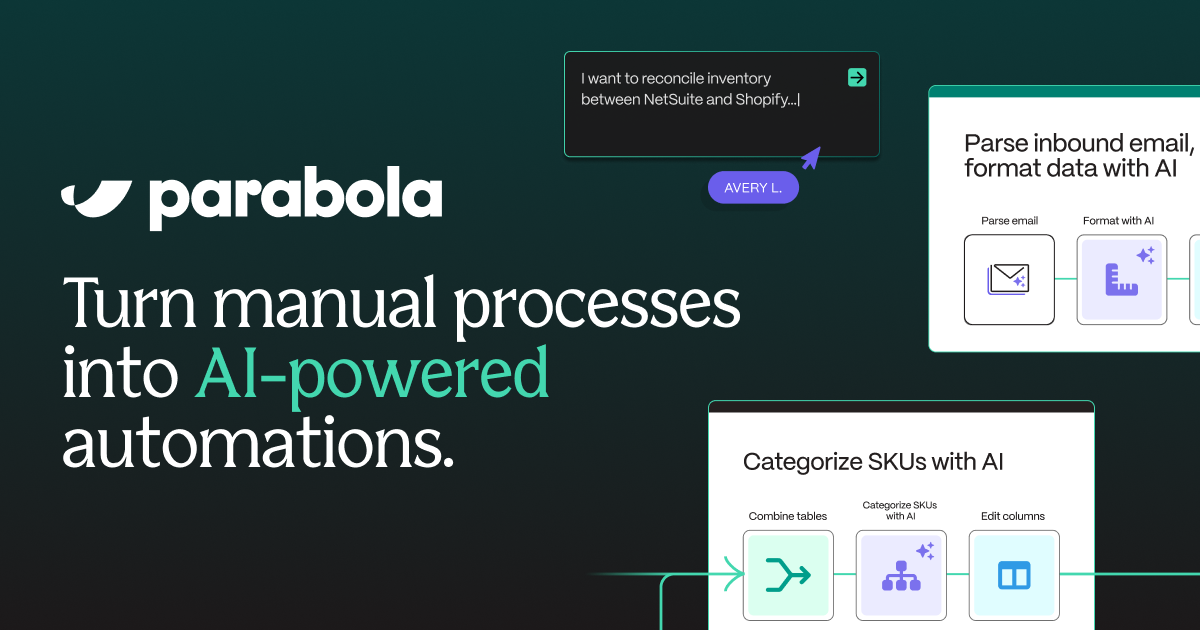Combine and Join Tables From Your CSV Data – Free Template
Combine and join tables from your CSV data without writing a single line of code.

Combine and join tables from your CSV data without writing a single line of code.









Parabola makes working with CSV files intuitive and efficient through its drag-and-drop interface and powerful data transformation capabilities.
In Parabola, retrieving data from CSV files is straightforward and flexible. The platform automatically handles different CSV formats and allows you to import data from various sources, including cloud storage and local files.
The Combine tables step in Parabola allows you to merge data sets from different sources based on matching columns. This powerful feature enables you to create comprehensive views of your business data and perform advanced analytics – mirroring the functionality of a vlookup in Excel.
Combine customer transaction data from one CSV with demographic information from another to create comprehensive customer profiles. This enables better targeting and personalization in marketing campaigns.
Merge product inventory data with supplier information to track stock levels, costs, and supplier relationships in a single view. This helps optimize ordering and maintain appropriate stock levels.
Join sales data with employee information to analyze performance metrics across different regions, teams, and time periods. This provides valuable insights for management decisions and resource allocation.
Working with CSV data in Parabola provides a powerful way to combine and transform your data without the complexity of traditional programming. By following these steps and examples, you can efficiently merge your CSV tables and create meaningful insights for your business needs.








Request a demo and see how Parabola can automate
your most manual SOPs.